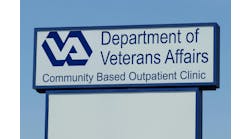A learning health system is defined by the U.S. Agency for Healthcare Research and Quality as a health system in which internal data and experience are systematically integrated with external evidence, and that knowledge is put into practice. In what ways are the current limits on interoperability between healthcare organizations a limiting factor in the growth of learning health systems?
Julia Adler-Milstein, Ph.D., a professor of medicine and director of the Center for Clinical Informatics and Improvement Research at the University of California, San Francisco, said, “When we talk about HIE [health information exchange], at its most fundamental level, it's about getting access to the data that one needs to understand the problem of interest. When information isn't flowing, we are impaired in our ability to turn data into knowledge and then to assess the performance piece to turn it back into data.”
Speaking Dec. 7 to the Learning Health System Collaboratory at the University of Michigan Medical School, Adler-Milstein said she has seen many efforts that are bumping into our interoperability shortcomings as they're trying to pursue learning health system projects.
Researchers often perceive that the data they are looking for is siloed and inaccessible. “That makes it hard to pursue progress on their health problem of interest,” she said. Even within a single health system, without good HIE, you can't get complete data on the individual. “Where exchange HIE capabilities exist, they are not always well-aligned with where patients are going to get their care,” Adler-Milstein explained. “You can't really know what happened to a patient after they were seen in a hospital because you don't know or have information about all the different places that they went next. Did they get readmitted to another hospital that you may not be aware of? With better HIE, we could do a better job of learning about what's working for a given patient or not.”
The other place where this starts to be a problem at perhaps a higher level of learning health system scale is that often there are not standardized ways to capture and exchange types of data that are important for learning health system efforts, she said. Examples she gave include patient-reported outcomes and the work that's going on with the HL7 Gravity Project around social determinants of health and social needs screening. “We just don't have yet standard ways to capture that data that everyone is using,” she said, “so even if you can get the exchange piece right, what you're left with is lots of different ways of coding the data.”
“We actually have a standard for patient-reported outcomes [PROs] implementation,” Adler-Milstein noted. “It is FHIR-based and we have an implementation guide. But if you look at the level of adoption, and whether it's federally required, the answers are low and no.” The key thing is not just to have the standard, but to get it in common use, she said. “If you're at the point of saying you want to build a multistakeholder learning health system effort around a given patient-reported outcome, you can reasonably assume then that the FHIR standard will be the one that's implemented so that you can have this PRO measured in a consistent way across all the people that might be contributing data. HIE is not just about moving the data. Ideally, it's moving around standardized data. We really need to come to some agreement on the standards that we use to encode really important data, like patient-reported outcomes and social determinants, just to name a couple.”
Adler-Milstein shared a chart that showed the movement of Medicare beneficiaries across pairs of hospitals in the United States. “I think it's such a fun graph, because it really shows patients are moving around a lot. And you can see the snowbirds and you can see all the different patterns that you would expect. What we need is HIE that actually matches this graph, so that when patients are doing this movement, we can capture their complete data.” She and colleagues used that data to do a survey of hospitals and ask them: Are you actually exchanging data with the other hospital with which you share the highest volume of patients? “What we found was that 63 percent of those pairs said that they were not or only a little bit interoperable with that other specific hospital.”
“The first problem that we need to solve is actually aligning the infrastructure with where patients are going to get care,” she said. “For learning health system efforts, this is key because if Michigan Medicine is doing a learning health system project that relates to readmissions, you need to know all the places your patients are getting readmitted. That requires HIE with the entities that might reasonably receive a readmission for someone that had been seen at Michigan Medicine.”
Adler-Milstein offered up a few interoperability policy predictions. She said she believes we will continue to be on a fairly incremental progress pathway, “but I don't think it's going to change rapidly in the coming years. A lot of the activity we’ll be seeing will be around this notion of US Core Data for Interoperability, because that is now the new standard for what EHRs need to be able to share. It will be really important to expand USCDI over time, so that the bar gets raised in terms of what all EHR systems need to be able to share.”
She said we'll continue to use a mix of old school methods of exchange, such as HL7, version 2, interfaces, because they're just they're so widely adopted. “I think there'll be a lot of inertia there,” Adler-Milstein said, “but increasingly, we'll see these new API-based approaches to exchange happening.”
The role of TEFCA
Adler-Milstein also has her eye keenly on the national networks and the development of the Trusted Exchange Framework and Common Agreement (TEFCA). “The national networks are going to do a lot of the commoditized data exchange functions,” she noted. “Then it's a question of whether HIEs can layer on top of exchange other value-added activities that their particular set of participants find useful and worth paying for. I think we're seeing a lot of HIE s do that and do it successfully and others not,” she added. “I think we will continue to see HIE consolidation. At the end of the day, we'll have a few large legacy HIE s that are providing a lot of value-added services. I think the pandemic has created some really interesting new opportunities for HIEs to help show where they can add value. But I think a lot of them probably won't figure that that piece out.”
TEFCA is only going to push us towards more towards commoditized data exchange, she stressed. “It is going to be harder and harder to be in the business of just moving data. It is going to be about figuring out what other business models there are for HIEs at the local or state levels. TEFCA and the development of QHINs could really shake things up. But we don't know yet. TEFCA is voluntary. It's not clear who's going to participate, and in what way, so I don't think it's a foregone conclusion that that's going to eclipse all the current approaches to moving, information around.”
She also predicts we are likely to see a lot more focus on expanding the breadth of demographic and social determinants data that will be married to clinical data for exchange. That includes data about patients’ race, ethnicity, and the neighborhood that they live in. “A lot of the new activity I've seen around HIE is really making sure that we have comprehensive data that can allow us to speak to issues of equity,” she added, “partly due to the pandemic.”


